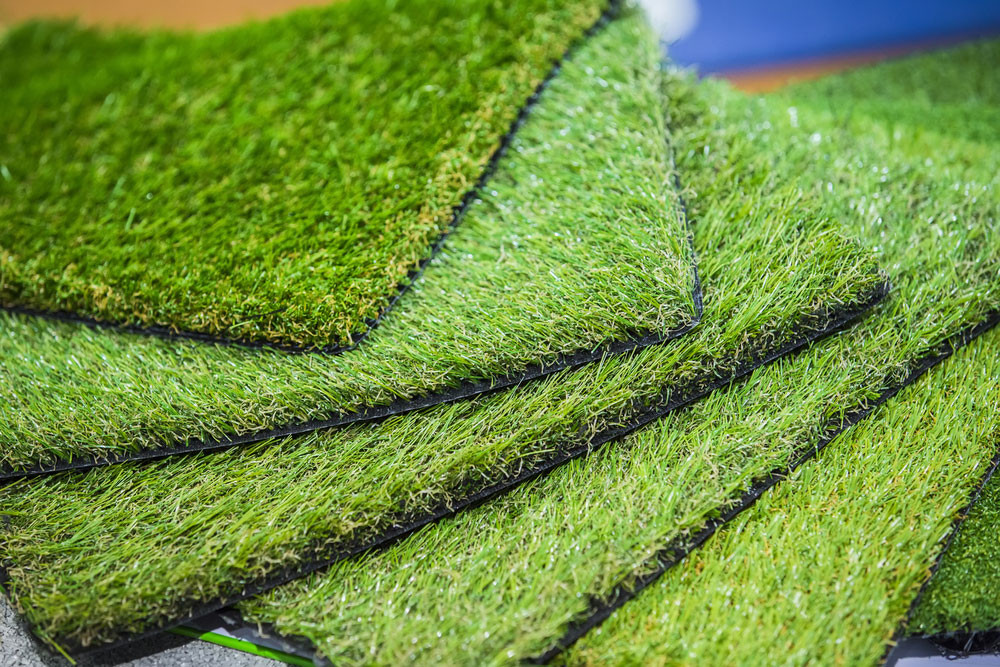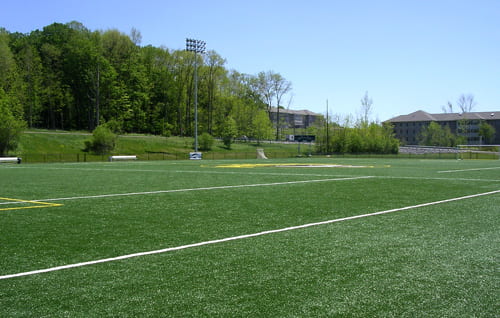Well-Known Phoenix Turf Companies Providing Best Synthetic Grass Installation
Well-Known Phoenix Turf Companies Providing Best Synthetic Grass Installation
Blog Article
See Why Homeowners Prefer Artificial Grass for Sustainable Landscaping Practices
As homeowners progressively focus on sustainability in landscaping, synthetic grass has arised as a compelling choice to traditional turf. Its capability to conserve water, lower upkeep initiatives, and lessen ecological impact positions it as a practical choice for those looking for environment-friendly options. Additionally, the aesthetic charm and flexibility of synthetic grass deal with varied style preferences. However, the implications of this change expand past mere convenience and visual appeals, motivating a more detailed examination of how these selections influence wider ecological outcomes. What stays to be explored is the full range of advantages that synthetic lawn can use to house owners and the atmosphere alike.
Water Conservation Advantages
One of the most considerable advantages of man-made turf is its duty in water preservation. In contrast, fabricated lawn removes this demand completely, as it does not call for irrigation.
Moreover, the installation of synthetic grass can add to a much more sustainable landscape. Home owners can considerably lower their water expenses, enabling reallocation of sources to various other ecological campaigns or family usages. Furthermore, synthetic grass is developed to hold up against numerous weather conditions without the need for supplemental watering, making it an optimal selection for areas dealing with water deficiency.
The environmental benefits extend beyond instant water savings. By reducing water intake, synthetic grass assists to reduce the effects of climate modification, preserving vital ecological communities that are intimidated by excessive water removal. As lasting landscaping practices gain grip, fabricated turf arises as an accountable choice for house owners seeking to develop eco-friendly outdoor spaces.
Minimized Upkeep Initiatives
Synthetic grass significantly decreases upkeep efforts compared to typical grass yards. With man-made grass, home owners can get rid of the taxing jobs related to natural landscape design, such as mowing, feeding, and weeding. This not only conserves valuable time yet likewise minimizes physical labor, making grass care available for individuals of any ages.
Traditional lawns need constant cutting to keep a visually pleasing height, whereas fabricated lawn remains consistently lavish without the demand for reducing. Additionally, house owners no much longer need to apply chemicals or fertilizers, which are often needed to maintain all-natural lawn healthy.
Moreover, synthetic grass is resilient and long lasting, requiring minimal maintenance past periodic cleaning and washing to get rid of particles. This ease of maintenance permits house owners to appreciate their outside areas without the constant fear of maintenance, giving more time for recreation and household tasks. Inevitably, the minimized upkeep initiatives connected with synthetic grass make it an attractive alternative for those looking for a low-maintenance, visually appealing landscape.

Ecological Effect Decrease
There is a growing acknowledgment of the environmental advantages related to fabricated lawn, particularly in terms of water conservation and lowered chemical usage. Conventional grass call for significant quantities of water, specifically in drought-prone areas, bring about increased stress on local water sources. In comparison, artificial grass gets rid of the requirement for watering, substantially reducing water consumption and promoting sustainability.
Additionally, conventional lawn maintenance frequently includes the application of chemicals, herbicides, and plant foods, which can contribute to dirt and water pollution. Synthetic grass reduces this ecological danger by calling for minimal maintenance and basically removing the demand for hazardous chemicals. This not only boosts soil health and wellness but likewise shields regional environments from hazardous overflow.
In addition, the production of all-natural grass lawns generally includes using additional hints fossil gas for mowing and landscape design tools, more adding to greenhouse gas exhausts. By selecting artificial grass, homeowners can dramatically decrease their carbon footprint related to yard treatment activities.
Aesthetic Charm and Versatility
In enhancement to its environmental advantages, synthetic grass provides considerable visual appeal and flexibility for landscape design. House owners can attain a rich, environment-friendly appearance year-round, eliminating the seasonal variations typically connected with all-natural lawn. This consistent aesthetic not only boosts the visual allure of a home yet additionally adds to a refined and well-maintained look.
Furthermore, synthetic grass is available in a variety of shades, styles, and structures, permitting customization to fit specific choices and style themes - Arizona artificial turf. Whether made use of in household yards, industrial spaces, or entertainment areas, it can flawlessly incorporate right into varied landscape design designs, from modern-day minimal to lush exotic settings
The convenience of artificial turf extends click for source past mere appearance; it can be set up in various places, consisting of roofs, outdoor patios, and even interior rooms, developing opportunities for distinct landscaping remedies. Additionally, it is ideal for a variety of activities, from youngsters's backyard to pet-friendly environments, offering functionality without endangering design.
Inevitably, the aesthetic appeal and adaptability of fabricated turf make it an attractive choice for property owners seeking lasting landscape design solutions that do not sacrifice appeal for environmental obligation.

Long-Term Expense Financial Savings
Among one of the most compelling benefits of synthetic grass is its capacity for long-term expense savings. Unlike all-natural grass, which calls for normal maintenance-- consisting of mowing, watering, fertilizing, and bug control-- artificial grass considerably lowers these recurring expenditures. House owners can conserve a considerable quantity on water costs, particularly in regions where water shortage is a pressing concern. The elimination of grass care services better adds to monetary savings, as there is no need for specific tools or labor.
Additionally, synthetic turf has a lifespan of 15 to 25 years, depending upon its high quality and usage. This toughness minimizes replacement costs, making it a more economical selection in the long run. Additionally, the initial investment in synthetic grass can commonly be redeemed through the financial savings accrued over time.
While the ahead of time price may appear higher contrasted to turf installation, the collective savings from reduced maintenance and water use typically surpass these initial expenditures. Inevitably, the adoption of synthetic grass not just promotes a lasting landscape design remedy however additionally provides property owners a monetarily smart alternative that straightens with long-lasting budgeting goals.
Conclusion
Synthetic grass emerges as an engaging option for sustainable landscaping, using substantial advantages in water conservation, minimized maintenance initiatives, and visit this page lessened environmental impact. Its aesthetic charm and adaptability improve the visual landscape while straightening with modern sustainability goals. Lasting expense savings contribute to its beauty for homeowners. As communities significantly prioritize environmentally pleasant practices, the adoption of synthetic grass stands for a dynamic action toward achieving resilient and lasting landscapes.
Furthermore, man-made turf is created to stand up to numerous weather conditions without the need for additional watering, making it a perfect selection for regions encountering water scarcity. (Artificial turf companies phoenix)

Artificial lawn emerges as a compelling option for sustainable landscaping, providing considerable advantages in water preservation, reduced maintenance efforts, and diminished environmental effect.
Report this page